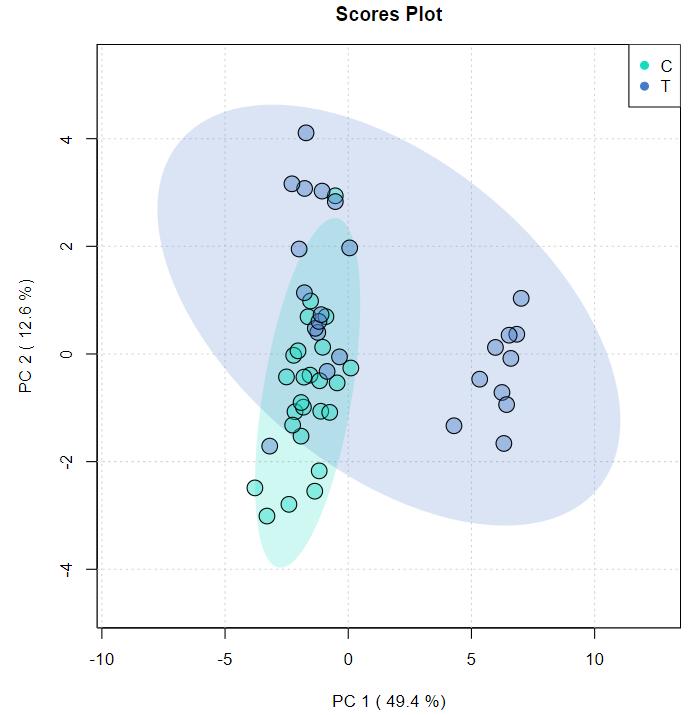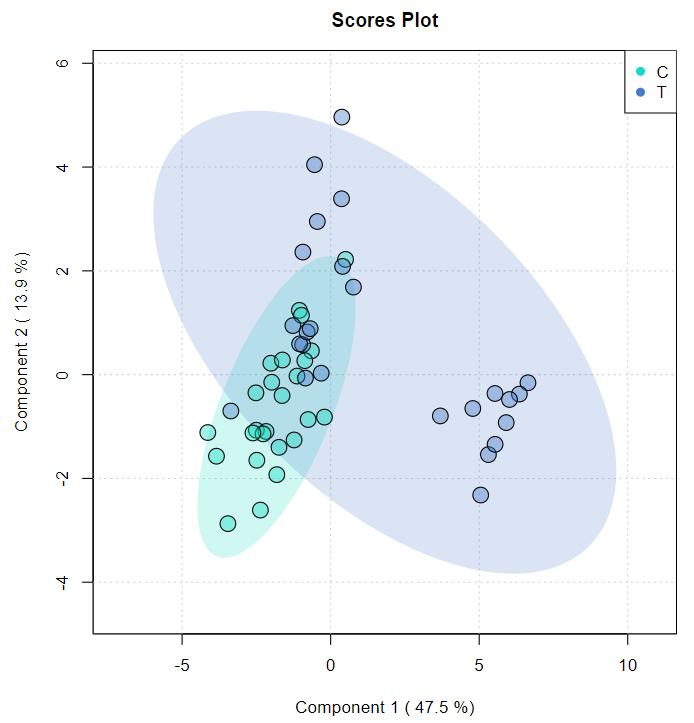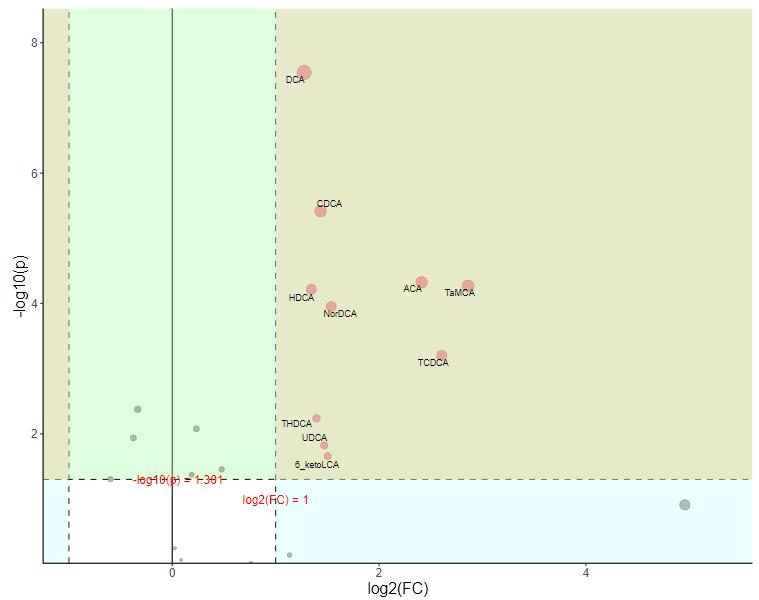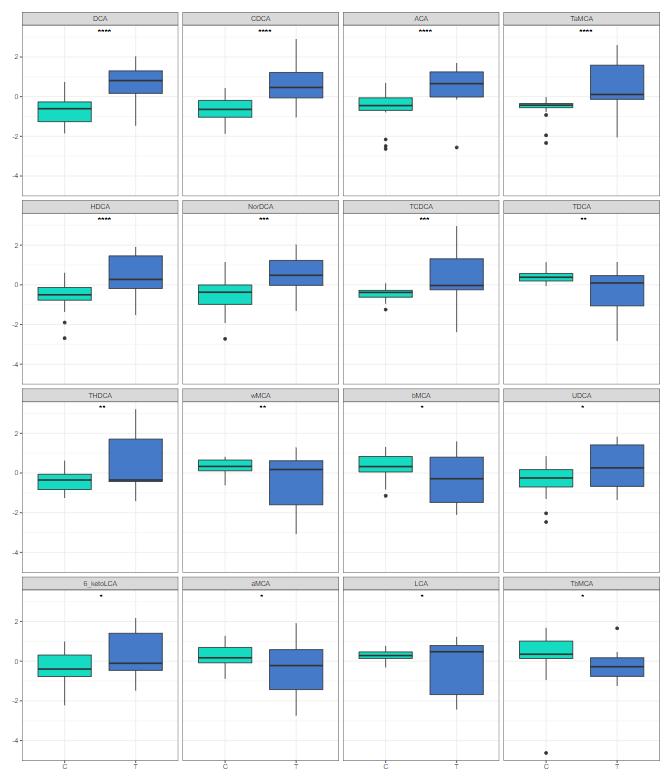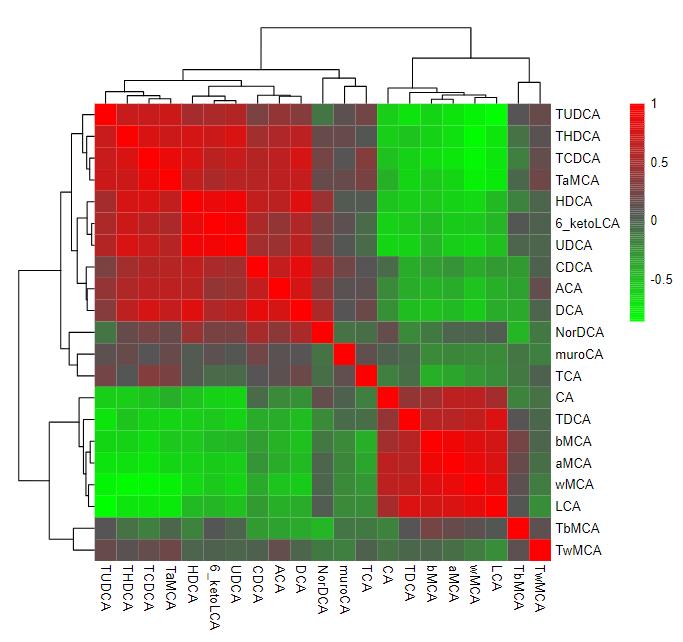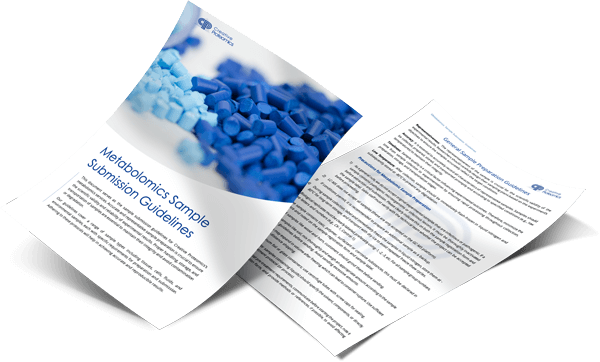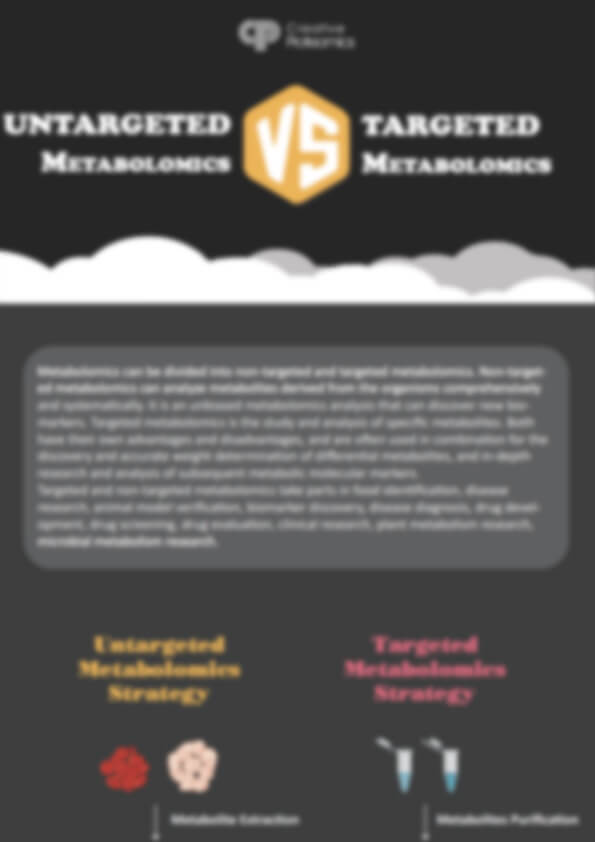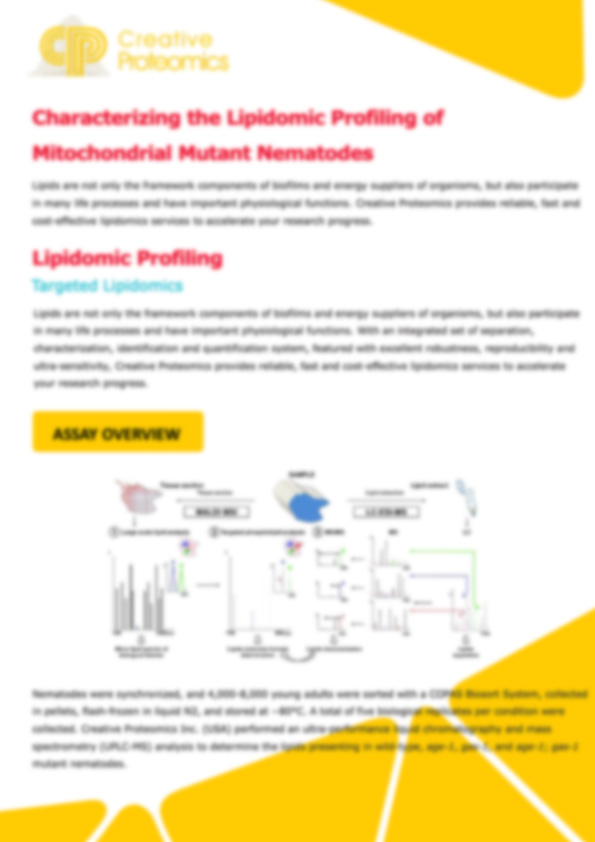Quantify Nucleosides and Nucleotides for Metabolomics & Drug Discovery
Nucleoside and nucleotide quantification by LC-MS is a core strength at Creative Proteomics. We deploy both triple quadrupole (TQ-MS) and high-resolution Orbitrap LC-MS systems to match the quantitative precision and sensitivity your project demands. This flexible platform supports a wide range of applications—from basic research to high-throughput compound screening—delivering consistent, reproducible data every time.
Whether you're focused on metabolomic profiling, investigating energy metabolism, or dissecting nucleotide biosynthesis pathways, our service ensures the analytical accuracy and molecular coverage required to advance your research.
Submit Your Request Now
×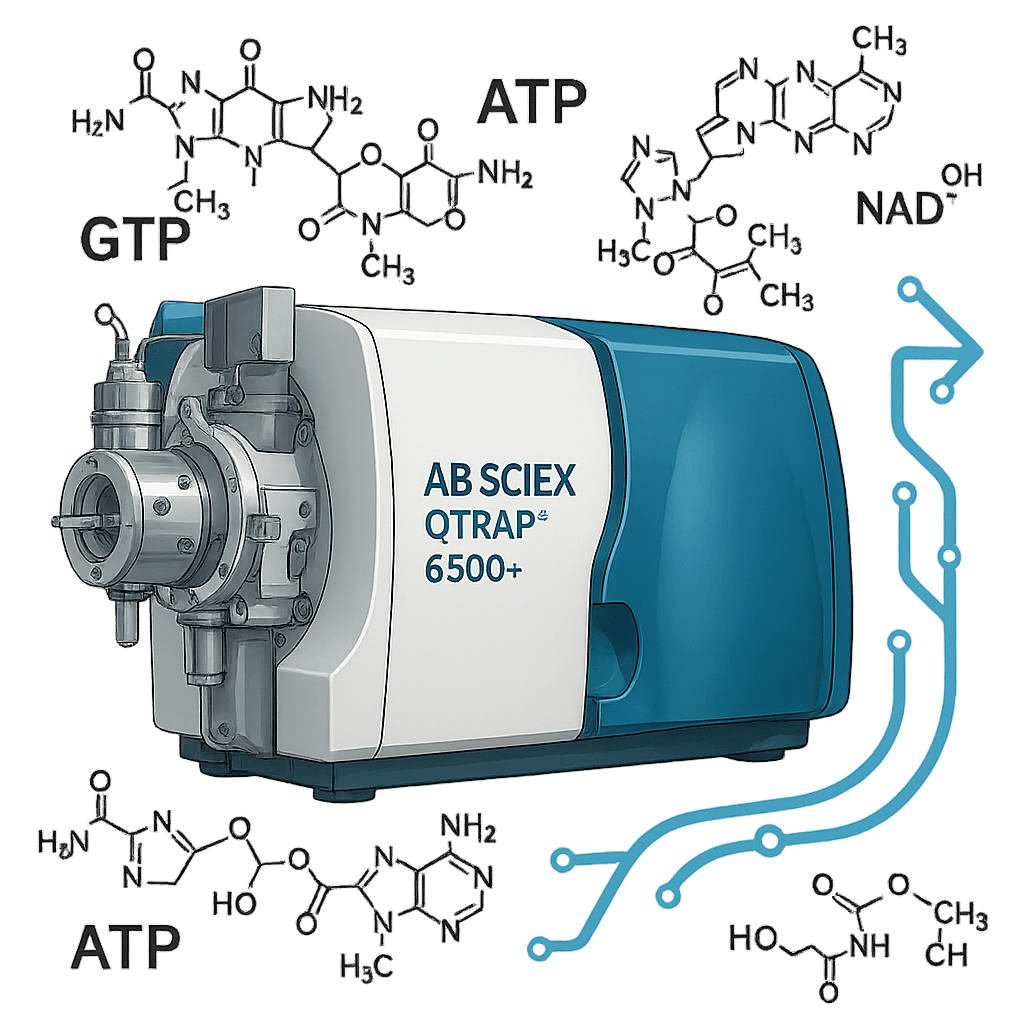
Accurate, Comprehensive, and Publication-Ready
Quantify >16 nucleosides & nucleotides with LC-MS precision
Dual-platform detection: QTRAP + Orbitrap systems
Ultra-low sample input, CV<10%,>0.99
Receive raw + normalized results with full metadata
- What is
- Service Details
- Metabolites Coverage
- Case Study
- Demo
- FAQ
- Publication
What Are Nucleosides and Nucleotides?
Nucleosides and nucleotides are fundamental biomolecules that form the backbone of DNA and RNA, making them essential to all life. A nucleoside consists of a nitrogenous base—either a purine (adenine, guanine) or a pyrimidine (cytosine, thymine, or uracil)—attached to a five-carbon sugar (ribose or deoxyribose). Once one or more phosphate groups are added, it becomes a nucleotide.
Today, the term "nucleotide" broadly refers not only to nucleoside monophosphates, but also to diphosphates and triphosphates such as ATP, CTP, and GTP. These phosphate groups are the key structural difference between nucleosides and nucleotides.
Beyond their genetic roles, nucleotides perform a wide range of biochemical functions:
- Energy transfer (e.g., ATP as a cellular energy currency)
- Signal transduction (e.g., cyclic AMP in hormone signaling)
- Cofactor components (e.g., NAD⁺, FAD, CoA)
Because of their central role in molecular biology, nucleoside and nucleotide profiling is used across diverse fields including:
- Biochemistry and molecular biology
- Pharmaceutical R&D
- Food science
- Targeted metabolomics
In particular, mass spectrometry-based nucleotide analysis (LC-MS) has become the method of choice for accurate detection, quantification, and structural clarification of these metabolites.
 Figure 1. Structure comparison between a nucleoside and a nucleotide
Figure 1. Structure comparison between a nucleoside and a nucleotide
Why Nucleoside/Nucleotide Profiling Matters in Modern Research
Nucleoside and nucleotide profiling offers researchers a window into the biochemical foundation of life. These molecules are not just building blocks of DNA and RNA—they serve as key regulators in energy metabolism, intracellular signaling, and enzymatic reactions.
In modern life science research, quantitative analysis of nucleotides and nucleosides supports investigations in:
- Metabolomics and pathway elucidation – Mapping how nucleotides fluctuate under different experimental conditions helps reveal metabolic bottlenecks, regulatory nodes, and stress responses.
- Cellular energy dynamics – Tracking ATP/ADP ratios or GTP turnover provides direct insight into mitochondrial function, biosynthetic activity, and cellular homeostasis.
- Drug mechanism studies – In pharmaceutical R&D, changes in nucleotide levels can reflect cellular responses to candidate compounds, enzyme inhibitors, or transporter modulators.
Because of their central role in biological systems, even small shifts in nucleotide concentrations can signal profound changes in metabolic states. Advanced LC-MS-based nucleotide mass spectrometry allows researchers to detect these changes with high precision, making it a critical tool in fields such as cancer biology, virology, synthetic biology, and systems pharmacology.
Our Nucleoside/Nucleotide Analysis Service: Accurate Quantification Beyond ATP
ATP has long been measured using the highly sensitive luciferin-luciferase luminescence assay—an established technique ideal for detecting localised ATP levels. However, this traditional method is limited to ATP detection and cannot capture the broader landscape of nucleotide metabolism.
Key biomolecules such as ADP, AMP, GTP, GDP, GMP, UTP, UDP, and UMP also play vital roles in energy transfer, cellular signalling, and biosynthesis. Unfortunately, the luciferin-luciferase assay falls short when it comes to simultaneous multi-nucleotide quantification.
To address this gap, Creative Proteomics has developed advanced LC-MS and HPLC-UV platforms that offer:
- High-throughput analysis of over 16 nucleosides and nucleotides
- Reliable identification and quantification, even in complex biological matrices
- Fast turnaround and reproducible results for research-driven decision-making
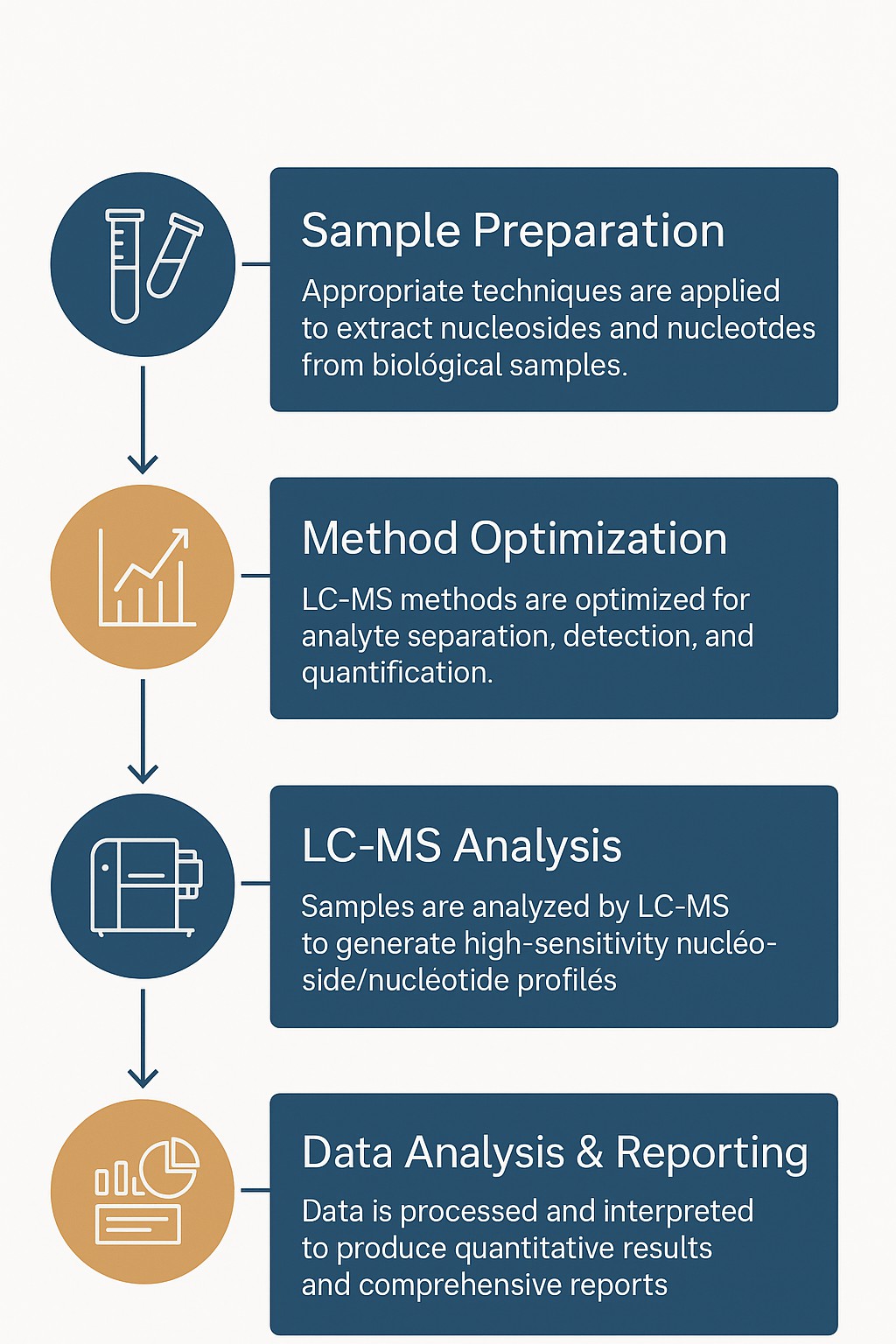
Metabolites Coverage
Nucleotides Quantified in This Service
| Nucleotides Quantified in This Service | |||
|---|---|---|---|
| Cytosine (C) | CMP | CDP | CTP |
| Adenine (A) | AMP | ADP | ATP |
| Guanine (G) | GMP | GDP | GTP |
| Uracil (U) | UMP | UDP | UTP |
| TMP | cAMP | cGMP | IMP |
| Nicotinamide adenine dinucleotide (NAD) | Nicotinamide adenine dinucleotide,reduced (NADH) | Nicotinamide adenine dinucleotide phosphate (NADP) | Nicotinamide adenine dinucleotide phosphate, reduced (NADPH) |
Metabolic Pathways Covered
- Pyrimidine metabolism
- Purine metabolism
- Nucleotide salvage pathways
- ATP/GTP energy cycle
- DNA and RNA synthesis
- One-carbon metabolism
- Pentose phosphate pathway (PPP)
- Cell cycle-regulated nucleotide metabolism
- NAD/NADP redox cycling pathways
Applications of Nucleoside/Nucleotide Analysis in Research
Metabolic Pathway Elucidation
Nucleotides are central to primary metabolism, particularly in energy transfer (e.g., ATP, GTP), coenzyme synthesis (e.g., NAD⁺, FAD), and signaling cascades (e.g., cAMP, cGMP). By mapping nucleotide levels across conditions, researchers can:
- Identify flux changes in purine and pyrimidine metabolism.
- Track cellular energy states during stress or drug treatment.
- Investigate links between nucleotide turnover and redox balance.
Drug Mechanism and Toxicity Studies
Nucleotide and nucleoside analogs are widely used in drug discovery as enzyme inhibitors, antiviral agents, or chemotherapeutics. Precise LC-MS-based quantification helps:
- Assess cellular uptake and metabolism of nucleotide analogs.
- Detect off-target effects and metabolic disruptions.
- Support pharmacokinetic studies in preclinical research models.
Biomarker Discovery and Validation
Although nucleotides are not yet mainstream clinical biomarkers, their role in research-only biomarker studies is growing. For instance, shifts in AMP/ATP or NAD⁺/NADH ratios can reflect cellular health and metabolic stress. In metabolomics workflows, nucleotide profiling complements other small-molecule panels to:
- Differentiate between experimental groups.
- Validate metabolic signatures in disease models.
- Reveal new hypotheses for downstream validation.
Systems Biology and Multi-Omics Integration
In systems biology, nucleotide profiling integrates seamlessly with transcriptomics and proteomics data to model pathway-level responses. Quantifying key metabolites enables:
- Mechanistic insights into pathway regulation.
- Better annotation of genome-scale metabolic networks.
- Contextual interpretation of omics-level perturbations.
Analytical Platforms & Advantages of LC-MS for Nucleoside/Nucleotide Detection
Why LC-MS Outperforms Other Techniques
- Higher Sensitivity and Selectivity: Compared to UV or fluorescence-based HPLC, LC-MS can detect nucleotides at femtomole levels and distinguish isobaric compounds with high confidence.
- Simultaneous Detection: LC-MS enables multiplexed detection of over a dozen nucleotide species (e.g., ATP, ADP, AMP, GTP, UTP, cAMP) in a single run, which is impossible using traditional luciferase or colorimetric assays.
- Minimal Sample Requirement: As little as 10 µL of extract is sufficient for a full quantitative panel, ideal for rare or limited biological samples.
- Broad Compatibility: Our validated LC-MS workflows accommodate diverse sample matrices including cell lysates, plasma, serum, microbial cultures, plant extracts, and tissues.
Complementary Techniques and Platforms
- HPLC-UV: While less sensitive, it remains useful for high-throughput screening when budget constraints apply.
- UPLC-QTOF and UPLC-TQ/MS: These advanced MS platforms provide enhanced resolution, faster run times, and greater reproducibility for targeted metabolomics.
Technological superiority
Professional detection and analysis capability: Experienced research team, strict quality control system, together with ultra-high resolution detection system and professional data pre-processing and analysis capability, ensure reliable and accurate data.
Reproducible: Obtain consistent and reproducible inter- and intra- assay results for data analysis.
High veracity of data: For sample identification, qualitative and quantitative analysis of various nucleosides and nucleotides can be achieved efficiently and accurately, with low cost, high efficiency, and standard curve R2>0.99.
High resolution and sensitivity: AB SCIEX QTRAP 6500 Plus, AB SCIEX QTRAP 5500, et al.
Sample Requirements
| Sample type | Recommended sample size | Pre-treatment and storage |
|---|---|---|
| Tissue | 100-200 mg | Snap freezing in liquid nitrogen, stored at -80℃. |
| Urine | 200-500 μL | 5000×g 4℃ Centrifuge for 30-60min, remove supernatant, store at -80℃. |
| Serum/plasma | >100 μL | Collected serum/plasma, snap freezing in liquid nitrogen, stored at -80℃. |
| Cerebrospinal fluid, amniotic fluid, bile and other body fluids | >200 μL | 4℃ Centrifuge for 10min, (or filter using 0.22μm membrane), remove supernatant and store at -80℃. |
| Suspension cells | >1*107 | Centrifuge and collect cells after liquid nitrogen snap freezing and store at -80℃. |
| Walled cells | >1*107 | Cultured walled cells are stored in 1.5ml centrifuge tubes, snap freezing in liquid nitrogen and stored at -80℃. |
| Cell supernatant | >2 mL | centrifuge at 4℃ for 3 minutes, take the supernatant and store at -80℃. |
Clear, Comprehensive, and Actionable Data Reporting
✅ Full Technical Documentation
You'll receive a comprehensive report detailing:
- Experimental workflow and sample preparation protocols
- MS/MS instrument settings and acquisition parameters
- Quality control outcomes and validation metrics
✅ Raw Data + Processed Results
All projects include both raw spectral data and fully processed results. Analyte concentrations are reported in μM (for fluids) or μg/mg (for tissue), with coefficients of variation (CV) typically<10%, ensuring high quantitative reliability.
✅ Annotated Analyte Metadata
To streamline your data interpretation, each analyte entry includes:
- Compound name and abbreviation
- Chemical formula and molecular weight
- CAS Registry Number (CAS#) for unambiguous reference
We ensure every dataset is publication-ready and fully traceable—giving your team both confidence and clarity.
Client Case Study

How Creative Proteomics Enabled the Discovery of NUDT22's Role in Pyrimidine Salvage for Cancer Research
- Background
- Methods & Technologies
- Key Findings
- Conclusion
Rapidly proliferating cancer cells require a steady supply of deoxynucleotide triphosphates (dNTPs) to sustain DNA replication. However, producing these nucleotides de novo is metabolically costly. Efficient alternative pathways, such as nucleotide salvage, can provide a crucial advantage.
NUDT22 is a NUDIX hydrolase that catalyzes the conversion of UDP-glucose into uridine monophosphate (UMP) and glucose-1-phosphate (G1P). While its biochemical activity was previously known, its physiological function—especially in cancer metabolism—remained unclear.
To investigate whether NUDT22 supports a novel pyrimidine salvage pathway in cancer, researchers conducted a series of in vitro and in vivo experiments. A pivotal part of this study involved quantifying intracellular dNTP pools, a technically challenging task that was successfully executed by Creative Proteomics using advanced LC-MS technology.
✅ Sample Preparation
The research team generated NUDT22 knockout (KO) cell lines using CRISPR/Cas9 in both U2OS osteosarcoma cells and hTERT-RPE1 fibroblasts. Cell pellets were collected and prepared for nucleotide quantification.
✅ LC-MS-Based Nucleotide Quantification by Creative Proteomics
Creative Proteomics performed targeted dNTP analysis using UPLC-MRM/MS technology. Key features of the method included:
- Instrument Setup: Waters Acquity UPLC + SCIEX QTRAP 6500 Plus;
- Detection Mode: Negative ion MRM (Multiple Reaction Monitoring);
- Analytes: dATP, dGTP, dCTP, dTTP;
- Internal Standards: ^13C- or D-labelled ATP, GTP, UTP;
- Chromatography: C18 column (2.1×100mm, 1.8 μm), with a 20-minute gradient at 50°C;
- Quantification: Internal standard calibration with linear regression (R² > 0.99);
- Quality Controls: Protein normalization, replicate injections, and batch validation.
This enabled accurate and reproducible quantification of nucleotide concentrations down to sub-micromolar levels—critical for interpreting the metabolic consequences of gene knockout.
- NUDT22 knockout led to a significant decrease in all four dNTPs in U2OS cancer cells, but only minor changes in non-cancerous hTERT-RPE1 cells—highlighting cancer-specific dependence.
- Reduced dNTP levels correlated with slower DNA replication fork speed and decreased EdU incorporation, indicating impaired DNA synthesis.
- Uridine supplementation restored DNA replication speed, confirming that NUDT22 supports UMP production required for DNA synthesis.
- The findings suggest that NUDT22 plays a central role in a newly defined pyrimidine salvage pathway, especially crucial in metabolically stressed tumor cells.
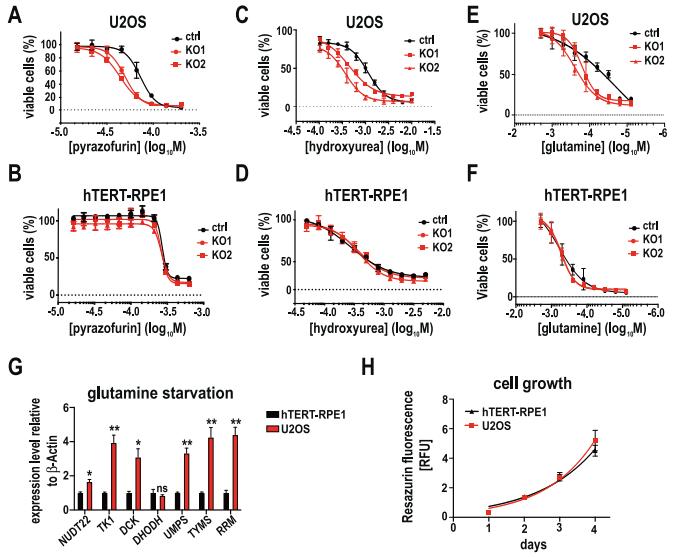 Loss of NUDT22 potentiates inhibition of nucleotide metabolism.
Loss of NUDT22 potentiates inhibition of nucleotide metabolism.
This study—published in Oncogene (Walter et al., 2023. DOI: 10.1038/s41388-023-02643-4)—demonstrated for the first time that NUDT22 enables cancer cells to salvage pyrimidines from UDP-glucose, supporting dNTP supply and maintaining genome stability.
Creative Proteomics played a critical role in this discovery by:
- Delivering high-sensitivity, high-throughput LC-MS analysis of intracellular nucleotide pools;
- Ensuring data quality, reproducibility, and compliance with high-impact journal standards;
- Enabling the research team to validate a novel metabolic vulnerability in cancer cells.
This collaboration illustrates how our targeted metabolomics services empower cutting-edge research with the data integrity and analytical depth required for publication in leading scientific journals.
Demo Result
FAQ
How do nucleosides and nucleotides impact cellular functions—and why should we analyze them?
Nucleosides and nucleotides are essential molecules in every living cell. They fuel biological reactions, store genetic material, and regulate cellular signalling. Nucleotides like ATP power key activities such as muscle contraction, DNA replication, and enzyme activation. Others, like cAMP, serve as molecular messengers in signalling cascades. Given their wide-ranging roles, fluctuations in nucleotide levels can reveal shifts in energy metabolism or cellular stress. That's why nucleoside analysis and nucleotide profiling are crucial tools in biochemical and pharmaceutical research, helping scientists decode complex pathways and evaluate experimental treatments—strictly for non-clinical use.
What steps ensure accuracy and reproducibility in your LC-MS nucleotide analysis?
We apply rigorous quality control from start to finish. Our instruments are calibrated with certified standards, and each run includes internal controls and duplicates. We validate standard curves with correlation coefficients (R²) above 0.99 to ensure linearity. To maintain precision across projects, we monitor instrument performance regularly and apply robust pre-processing workflows. Our expert bioanalysts review all results manually and flag any anomalies for secondary verification. This multi-layered approach ensures the high reliability expected from advanced nucleotide mass spectrometry.
What's the best way to prepare samples for nucleotide or nucleoside analysis?
Sample integrity starts at collection. For plasma or serum, use sterile, EDTA-free tubes and process samples quickly to reduce degradation. Spin down cells promptly and store supernatants at –80°C. For tissue, flash-freezing in liquid nitrogen is essential to preserve nucleotide levels. In cell cultures, minimise handling time and avoid metabolic stressors like heat or pH shifts. Whether you're working with cell lysates, organ tissues, or culture media, consistent, contamination-free prep is key to capturing authentic nucleoside/nucleotide profiles.
How do you report unexpected or complex results?
We believe complex data shouldn't be confusing. If unexpected patterns emerge, we rerun tests when needed and consult internal scientific leads for interpretation. Each report includes raw data, method details, QC outcomes, and flagged insights for further exploration. If required, we offer one-on-one consultations to walk through findings and suggest next steps. Our goal is to help your team extract clear, research-driven conclusions from every project.
Learn about other Q&A.
Publication
Here are some publications in Metabolomics research from our clients

- NUDT22 promotes cancer growth through pyrimidine salvage. https://doi.org/10.1038/s41388-023-02643-4
- Anti-inflammatory activity of black soldier fly oil associated with modulation of tlr signaling: A metabolomic approach. 2023. https://doi.org/10.3390/ijms241310634
- Non-invasive elevation of circulating corticosterone increases the rejection of foreign eggs in female American robins (Turdus migratorius). 2022. https://doi.org/10.1007/s43032-020-00283-7
- Neddylation is required for perinatal cardiac development through stimulation of metabolic maturation. 2023. https://doi.org/10.1016/j.celrep.2023.112018
